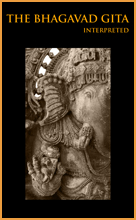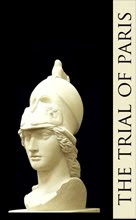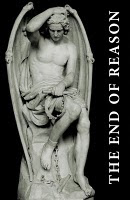The text of the Mahabharata, in which the Bhagavad Gita, the "Divine Song," is found, describes the Gita as the only scripture needed to understand God's message to mankind. There is a rich mythology surrounding the writing of the Mahabharata. Vyasa is considered its author, and Ganesha, sacrificing a tusk in the task, is Vyasa's amanuensis, taking every word down faithfully.
Yet the Bhagavad Gita stands apart from this mythology. While Vyasa is the putative author, the text of the Mahabharata itself describes the episode of the Bhagavad Gita as something special—a full and exact recounting of Krishna's words to Arjuna, while they speak between the contending armies. The Mahabharata itself testifies that, in the Bhagavad Gita, it is Vishnu Himself speaking to the listener, to the reader. It can be argued that the rest of the Mahabharata can be dispensed with, and the message of the Gita still dazzles.
In this sense, the Gita's extraction from the Mahabharata is wholly appropriate. After all, while Krishna speaks and acts in other episodes of the Mahabharata, and while exegetical interpretation of those words and actions is not objectionable, the Gita remains the prism through which those words and actions must be understood, even if sometimes they seem to contradict the spirit of the Gita. In essence, the Bhagavad Gita remains the best and most complete distillation of what Krishna reveals to Arjuna, and what Krishna asks mankind to believe.
In reference to the Gita, the text of the Mahabharata is explicit:
"There is no need for any other scripture….The Gita includes all the scriptures; Hari [Krishna] comprises all gods; the Ganga contains all the places of pilgrimage; and Manu's text holds the wisdom of all the Vedas….And the nectar of the entire Mahabharata was in Krishna's song to afflicted Arjuna, extracted and offered face to face."
There is something uncomfortably convenient about believing that one does not need to refer to the Mahabharata to understand the Gita. Krishna's actions in the Mahabharata are sometimes at odds with the words he reveals in the Bhagavad Gita. Simply ignoring the rest of the Mahabharata is an easy, though not elegant, way to paper over any seeming contradictions. In the Temple of Hanuman I address those contradictions, so I will not address them here. Nevertheless, making no reference to the Mahabharata to students unfamiliar with the epic seems like a dodge.
Finally, the argument is made that the Gita was originally an independent work, an independent Upanishad inserted into the Mahabharata later. Yet the context in which the dialogue between Krishna and Arjuna takes place remains relevant. What better time to ask questions of God than when standing between two armies at the decisive moment, when you are preparing to put those you have loved and esteemed to the sword? "Is this my duty?" Arjuna asks. Understood either literally or figuratively, the Bhagavad Gita is the most precious fruit from the tree of this great epic. If not itself the original product of the Mahabharata, this fruit is not served by cutting down the tree.
Finally, the argument is made that the Gita was originally an independent work, an independent Upanishad inserted into the Mahabharata later. Yet the context in which the dialogue between Krishna and Arjuna takes place remains relevant. What better time to ask questions of God than when standing between two armies at the decisive moment, when you are preparing to put those you have loved and esteemed to the sword? "Is this my duty?" Arjuna asks. Understood either literally or figuratively, the Bhagavad Gita is the most precious fruit from the tree of this great epic. If not itself the original product of the Mahabharata, this fruit is not served by cutting down the tree.
Ignoring the Mahabharata might also be justified by the Mahabharata's oppressive length. It is many times over the length of the Iliad and the Odyssey together. Its characters, and the basic outline of the story are unfamiliar to Western readers, and a commitment to reading it is hampered by the difficulty of finding complete translations of the entire work, and the sheer time required to read it.
Abridgments are useful and available, and can provide a quick introduction to the story. I think this, at least, is appropriate before reading the Gita itself, to place the work again in its context. Though many would undoubtedly consider any summary of the work to be inadequate, there is no harm acquiring some immediate familiarity with this, the longest Sanskrit epic. Knowing that I am unequal to the task of attempting an interpretation of the Mahabharata from start to finish. I would encourage the reader to find an abridgment, or at least a scholarly overview.






very beutifully described, shree shawni ji.
ReplyDeletei will try.
yours
ashok gupta
delhi
ashok.gupta4@gmail.com
I think you should start so that your students could finish it.
ReplyDeleteWisdom